September 2021
This month, we added a full-fledged survey editor to the portal, introduced DQI, updated photo markup filters, and much more.
Questionnaires Editor
Earlier we have added the « Questionnaires» section to the portal, where you can edit or delete the survey questions.
Now you can fully add new surveys in the editor. You can create a questionnaire from scratch, add any number of questions to it, and most importantly, link it to a task.
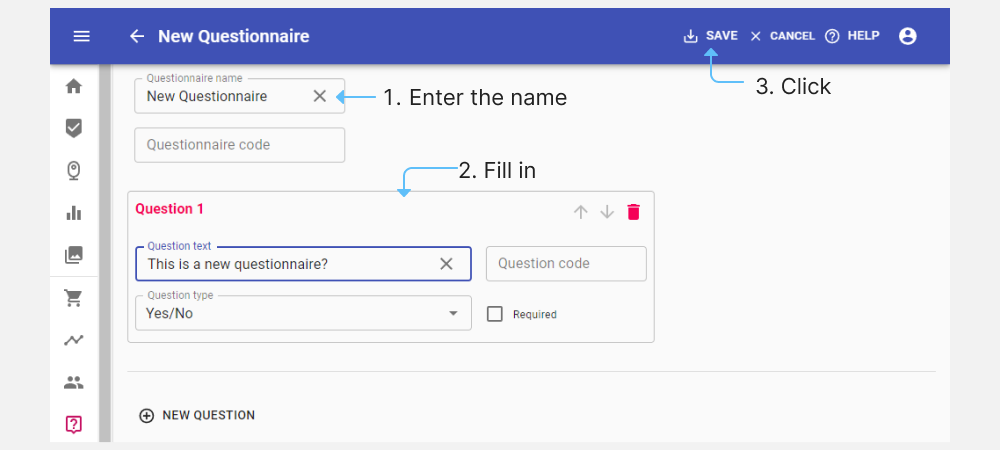
If there are errors when creating a question, for example, a question code has already been specified earlier, the system will notify you about it.
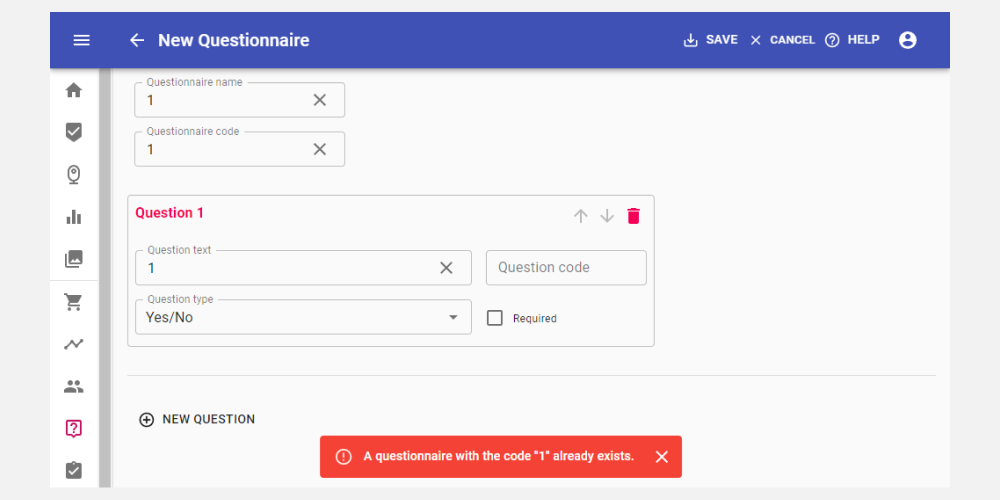
In addition, dependent questions were introduced. They will be given to a user in the application, in case a certain answer was given to the main question.
You can also configure the dependency of some questions on others in the editor.
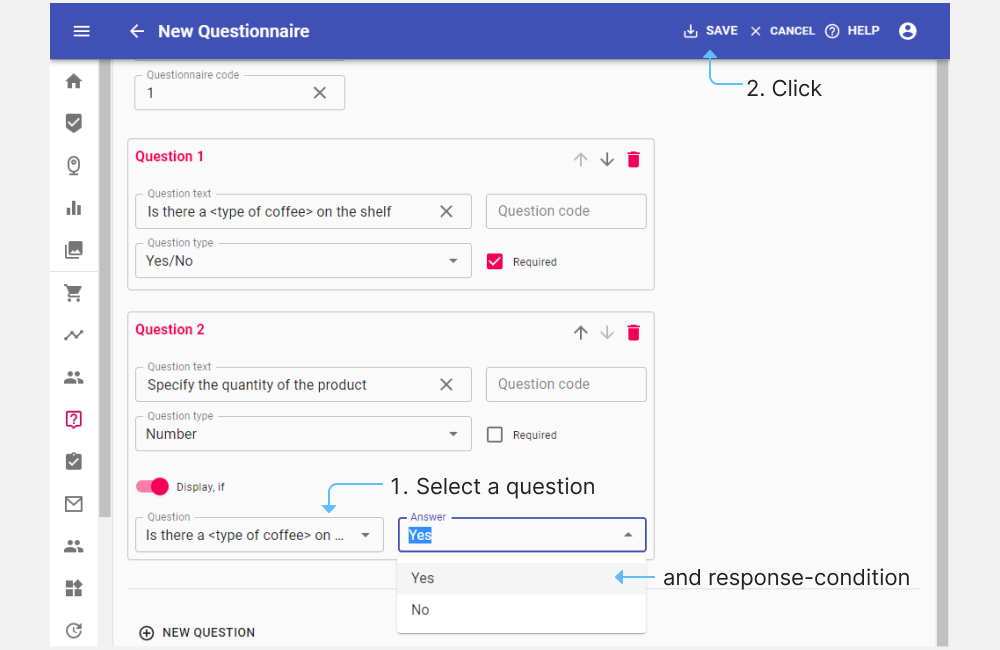
DQI
Data Quality Indicators (DQI) is a system that evaluates the quality of data that is received during a visit. This can be data from a photo, from a scene, or from the entire visit as a whole.
DQI will allow you to evaluate the quality of photos in scenes and the reliability of the data received from them. For example, if the photo was taken at a large angle or the visit ended suspiciously quickly, the system will let you know about it, and you will be able to quickly influence the situation.
The way it works
Mechanisms have now been added to the system that determine the indicator for each specific DQI. Each indicator corresponds to a threshold value, which the indicator should not fall below or rise above. For example, the sharpness of the photo should not be lower than 300.

During the work of users, the system analyzes data obtained from photos, scenes or visits (current and past). If any of the DQI indicators deviate from the threshold value, the system will issue a warning. Alert severity also varies from minor to critical.
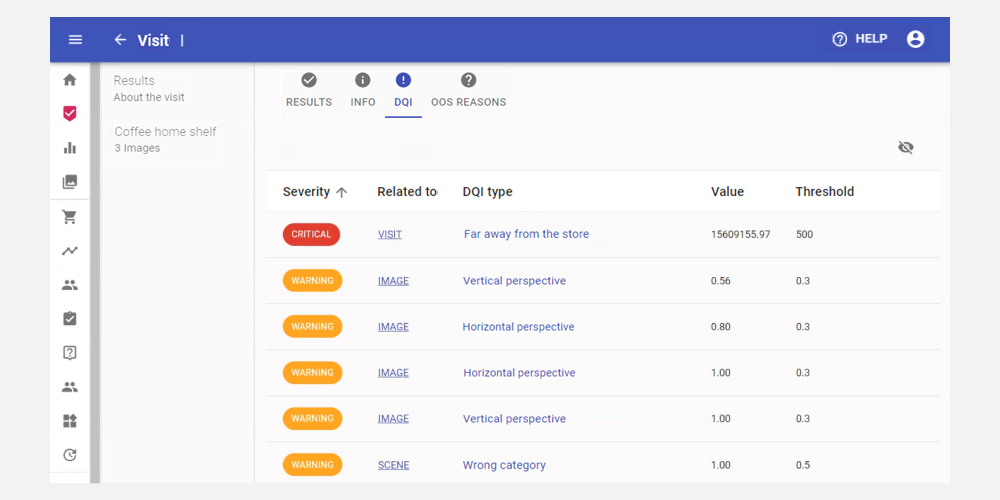
Where to look for notifications
Notifications appear both on the portal and in the mobile app.
DQI can be viewed:
- By visit — in the Results section, on the DQI tab;
- By scene — in a specific visit scene, on the DQI tab;
- For a separate photo — in the visit scene, on the Photos tab. To do this, you need to install a new filter - DQI.

The DQI list will be gradually supplemented with new indicators.
New filters
Scenes now have new filters on the Photos and Panoramas tabs. They will allow you to select specific data to display on the photo.
On the Photos tab, you can separately view:
- Products;
- Prices;
- Detailed information about price tags;
- Brand blocks;
- Shelves;
- Racks;
- Image tags;
- Size explanation;
- Relationship between products and prices;
- DQI.
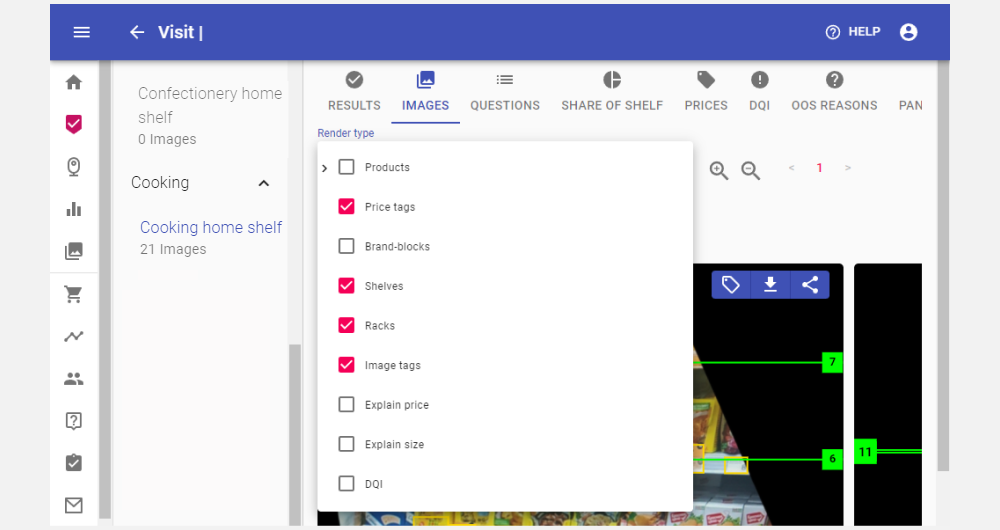
The following filters are available for the Panoramas tab:
- Products;
- Prices;
- Brand blocks;
- Shelves.

In addition, for the Goods filter, you can change display color by SKU, Category, Brand, «Friend or Foe», and Manufacturer.

SKU filters
If there are many products in one photo, you can select specific SKUs to display in it. This can be done using the Filter by SKU button.
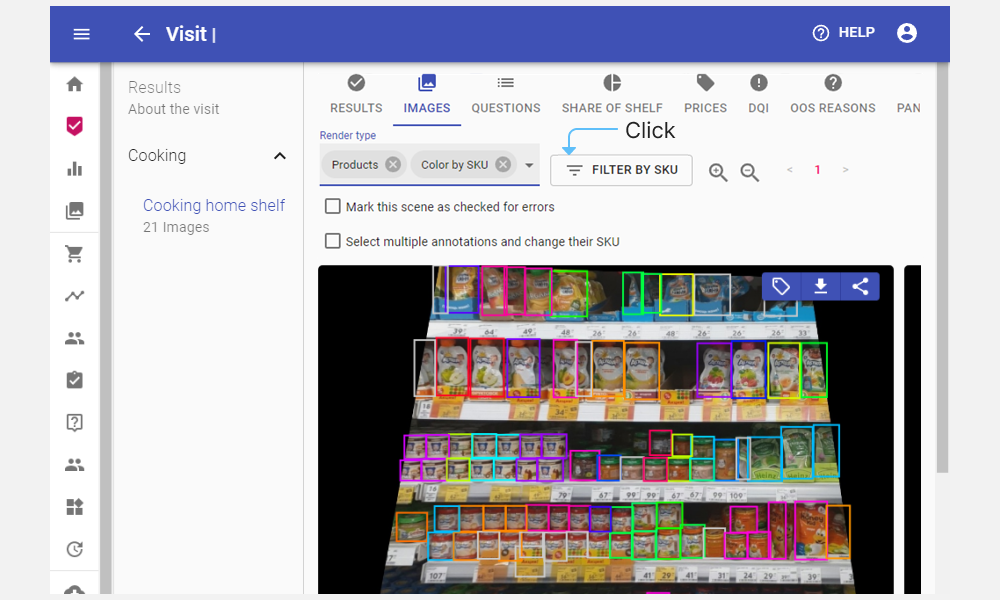
Just tap on the filter and unflag the products you don't want to display.
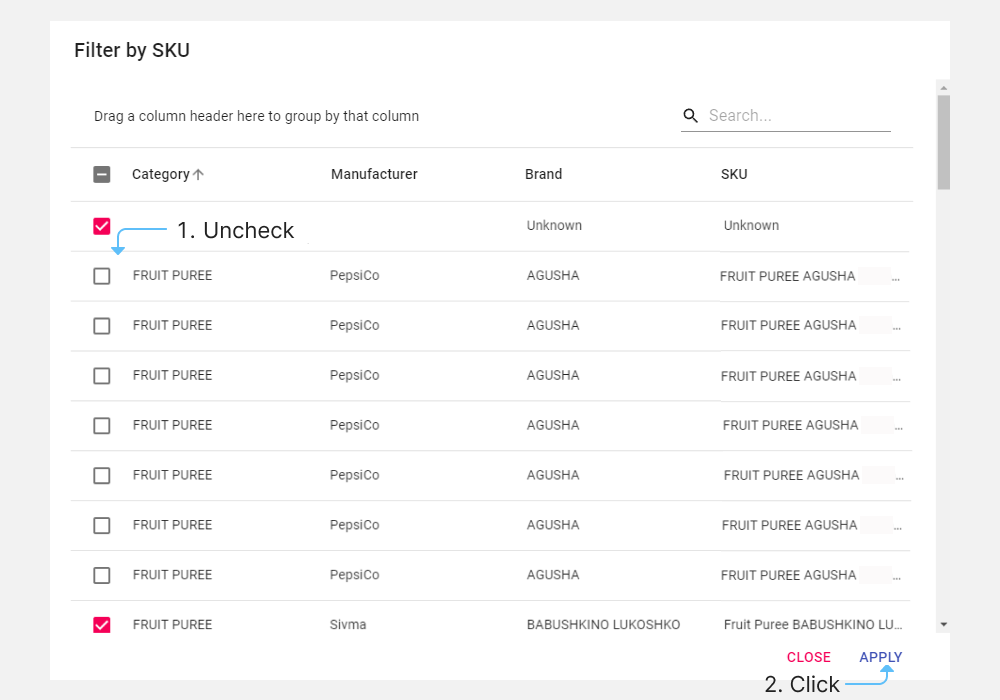
The system will leave boxes only for those products that are marked in the list.
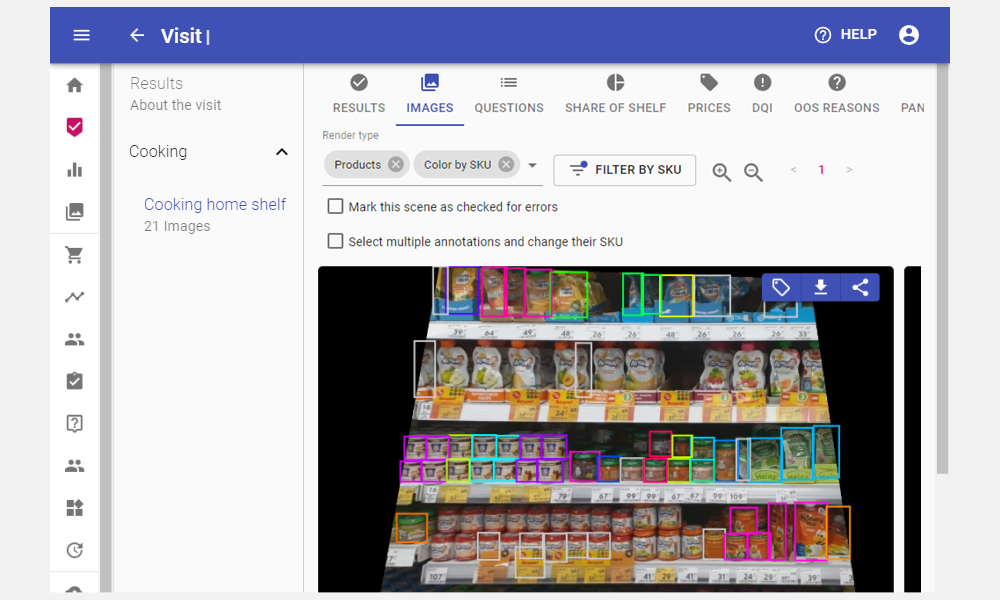
OCR price tags
We continue to work on the price tag classifier. Now the classifier recognizes the name and the price of a product on a price tag separately. For this feature to work, there must be a large and clear photo of a price tag.
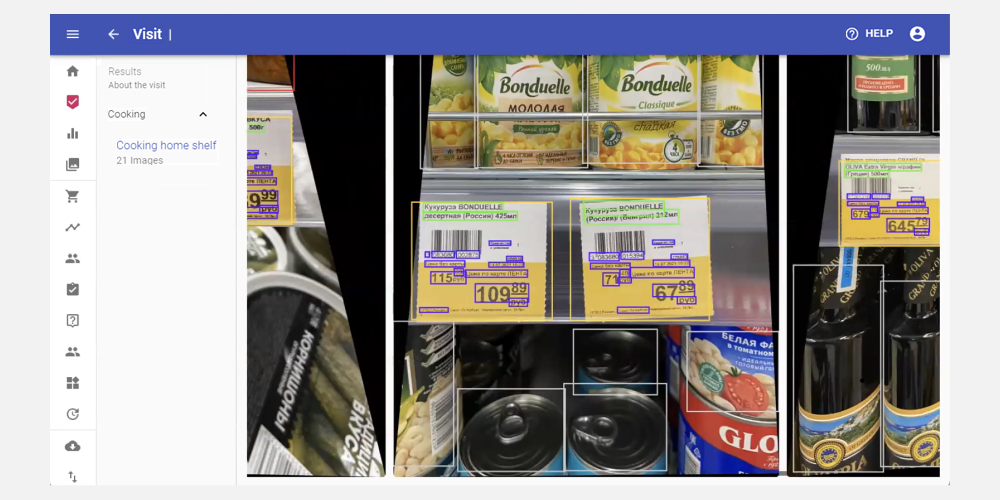
The names in the photo are marked with green boxes, everything else is marked with blue.
Next, we plan to teach the system to recognize more complete information from the price tag text: product name, the main price, the price with the store loyalty card, and so on.
IC Camera 3
One-off tasks
The application now features one-off tasks. Their creation and editing mechanism works exactly the same as in the portal.
You can create a task in the Supervisor mode right at the store.
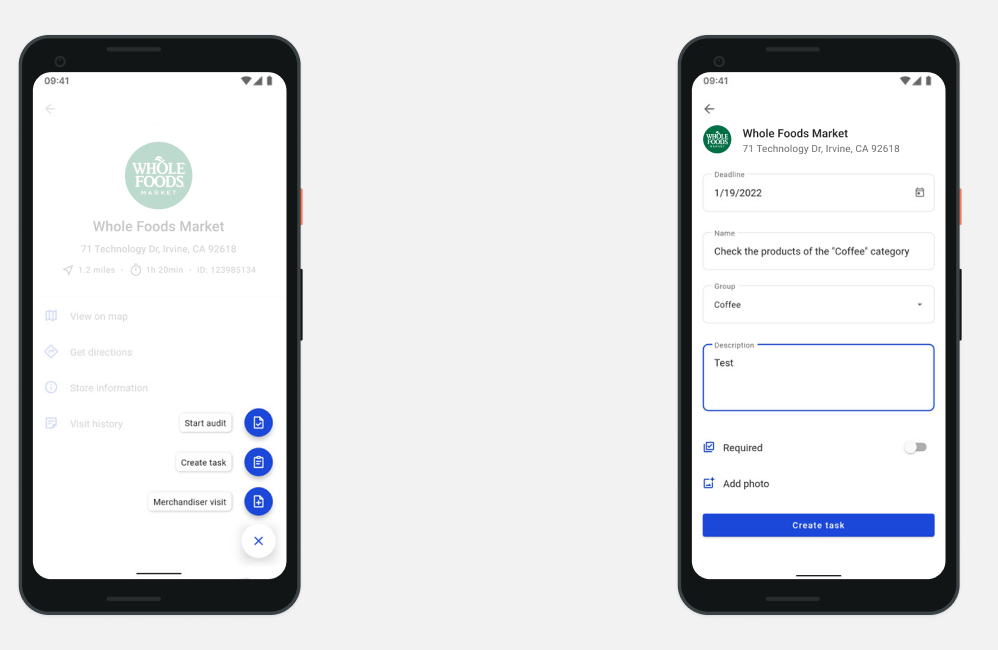
You can add a photo to a task, and edit it right in the application. This gives an opportunity to better convey to the user what needs to be done during the visit.
Mobile recognition
Mobile recognition allows users to quickly recognize photos on a device, and calculate indicators directly in the application, and not later, on the portal. This time we have added the rendering of results.
When taking a photo, the application immediately displays the locations of products and price tags relative to each other.
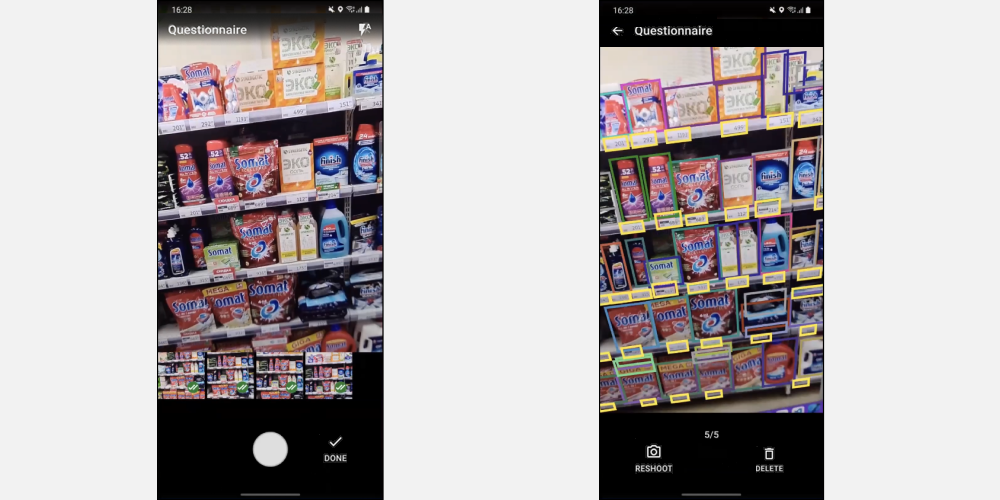
You can interact with the products and price tags in the application. For example, when you touch a product in a photo, its description will appear at the bottom of the application screen. Clicking on this description will open a product card, with a barcode and a product page. They are also clickable.

Audit mode
In the Supervisor mode, the Start Audit button was introduced. By tapping on it, the manager gets into the list of tasks only related to audit of visits.
Photo proof of the OOS reason
Now you can add a photo proof of the OOS reason in the application. As soon as you indicate the reason for OOS and take a photo, the data will be displayed in the visit on the portal.